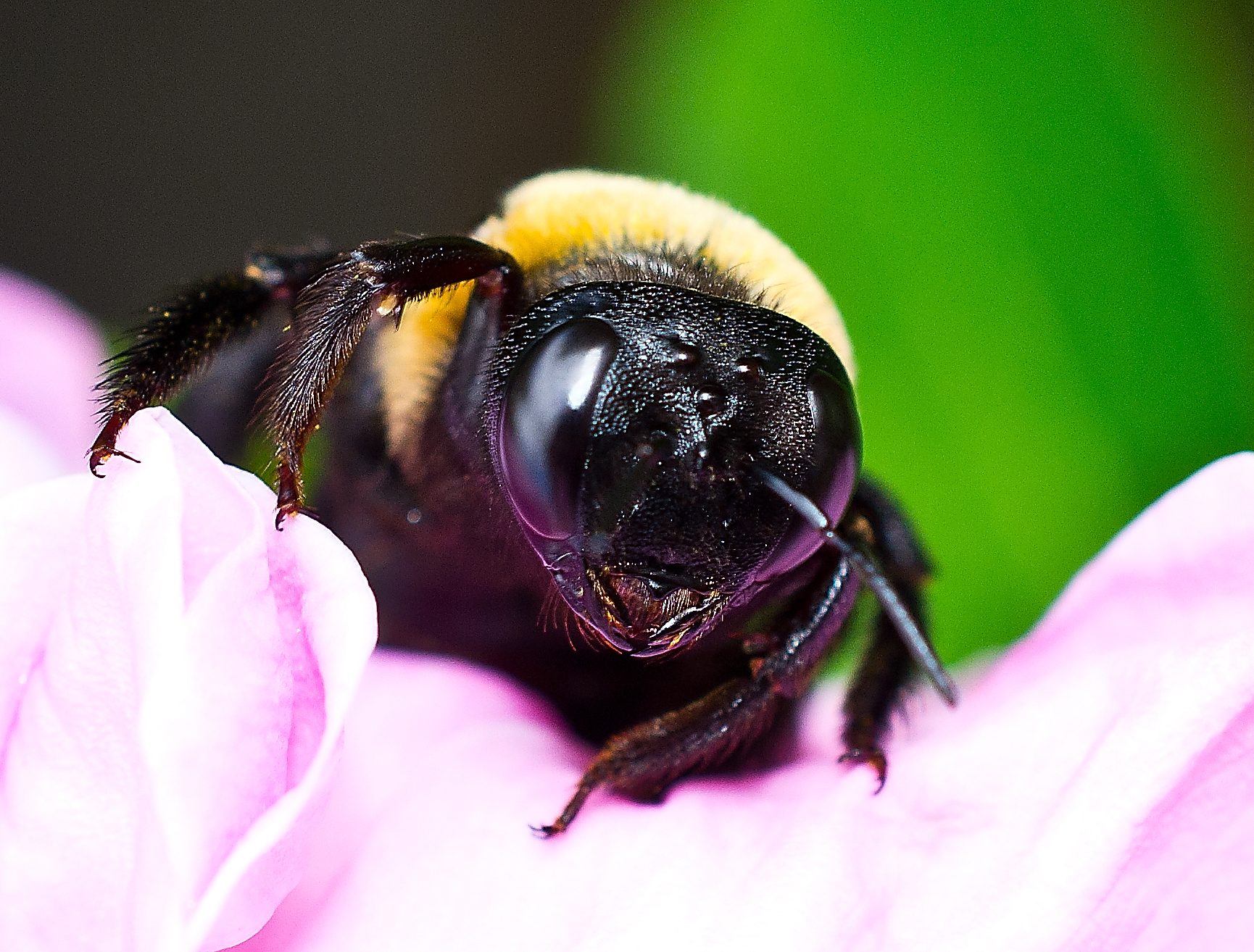As a mom, I am definitely concerned about stinging insects near my children. Spring is here and the warmer weather will certainly bring some bees, wasps, and hornets. For this post, I wanted to concentrate on two types of bees, Carpenter Bees and Ground Bees. These bees are not often talked about but you might see them around this time of year. Carpenter Bees are considered a Wood Destroying insect. They damage homes and structures with wood. Ground Bees are not typically associated with causing damage to structures but rather are a nuisance pest in lawns. Either way, I am not a fan of either one of these types of bees near my children. I am a fan of pollinators and know we need them but I also want to protect my children.
Part 1 Carpenter Bees
How Do You Identify a Carpenter Bees?
Carpenter Bees are sometimes mistaken for Bumble Bees. Their bodies are about the same size but there are some differences to help you identify them quickly. One of the first ways to tell the difference is that the Bumble bee has a hairy abdomen while the Carpenter Bee has a shiny abdomen. Insects have three parts: the head, thorax, and abdomen. The abdomen is the last segment of the body. Carpenter bees are only attracted to pretty flowers where bumble bees are not concerned with the appeal of a flower. Bumble bees are often developing colonies in the soil where Carpenter bees are nesting several feet off the ground in wood. It is likely that if you see a sole bee by itself appearing to stay near a piece of wood or gutter area, you are looking at a Carpenter Bee. Below is a picture of a Carpenter bee on a beautiful purple flower.
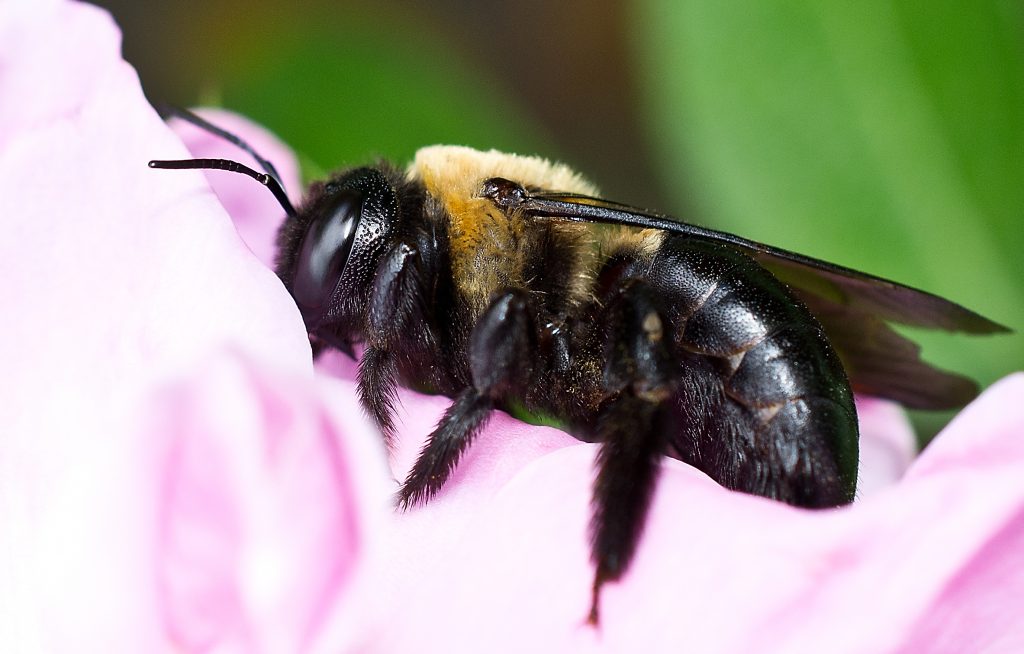

What type of damage will Carpenter Bees cause to my home?
Carpenter Bees will bore into wood on the exterior of your home. They typically will nest in areas a few feet off the ground or even higher near gutters. They will bore a hole into the wood that looks like someone purposefully drilled it with a drill bit. It looks like a perfect circle! After that, they keep boring until there is enough room for the female to lay eggs. The female Carpenter Bee will gather pollen from attractive flowers and deposit that with an egg into the newly formed gallery she made in the wood. When the deposit is large enough for her offspring, she will create a barrier around it to protect the egg and its food. She will do this several times. When the eggs, emerge in spring and then again in late summer, you will see several Carpenter bees near or reusing the first hole that was made. They will bore new galleries into the wood. You can see an example of this below.
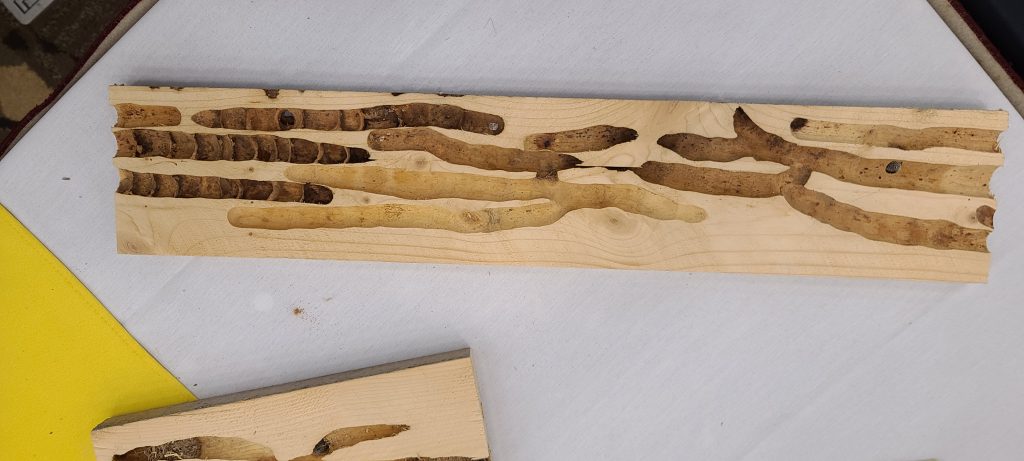

Do they sting?
The male carpenter bee is aggressive but will not sting because he does not have a stinger. The female carpenter bee does have a stinger but typically isn’t aggressive unless agitated. Male carpenter bees have a yellow or white dot on their face where the female carpenter bees have a solid black face.
What can I do to stop them?
There are multiple stories about painting and staining to deter carpenter bees. Most of these methods are ineffective once the paint or stain is dried. The paint or stain acts as a repellent only while wet. Carpenter bee nests can be removed by replacing the wood with a synthetic wood or having the wood covered with a metal flashing. Since female Carpenter bees are attracted to pretty flowers, installing dull flowers for your yard would help deter these pollinators.
Part 2 Ground Bees
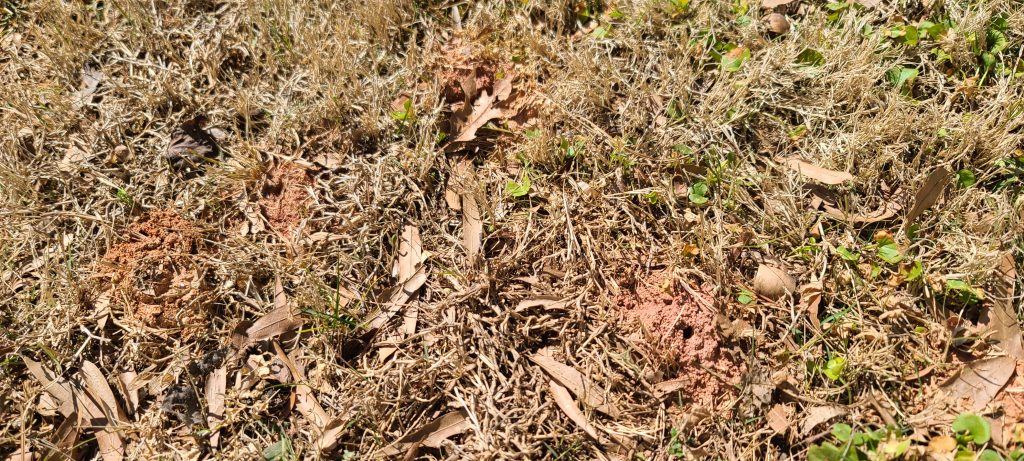

What are all these small piles of dirt that appeared suddenly?
Ground Bees are active around this time of year. They will make small piles of dirt as the dig in the ground. They are considered solitary bees but it is not uncommon to see hundreds of these piles grouped together. It seems like they have taken over your yard.
Do they sting?
Similar to the Carpenter bee, they are not known for stinging people but they can. The males do not have stingers but the females do. They are often more a nuisance to people than causing injury. As they are around during the Spring for about 4-6 weeks, they have been known to delay outdoor fun from time to time.
Will they damage my lawn?
Ground bees are typically not found in lawns with thick grass that is watered often. If you are someone who takes great pride in their lawn and every blade of grass is well cared for, you are probably deterring ground bees from taking residence. They are great aerators for unhealthy lawns. As they dig up the dirt, ground bees can allow for yards to naturally be more well-drained and become healthier. If you prefer to take care of the aesthetics of your lawn or want to enjoy playing soccer with your kids in that area, they can easily be a nuisance. Can you see the ground bee in the hole below?
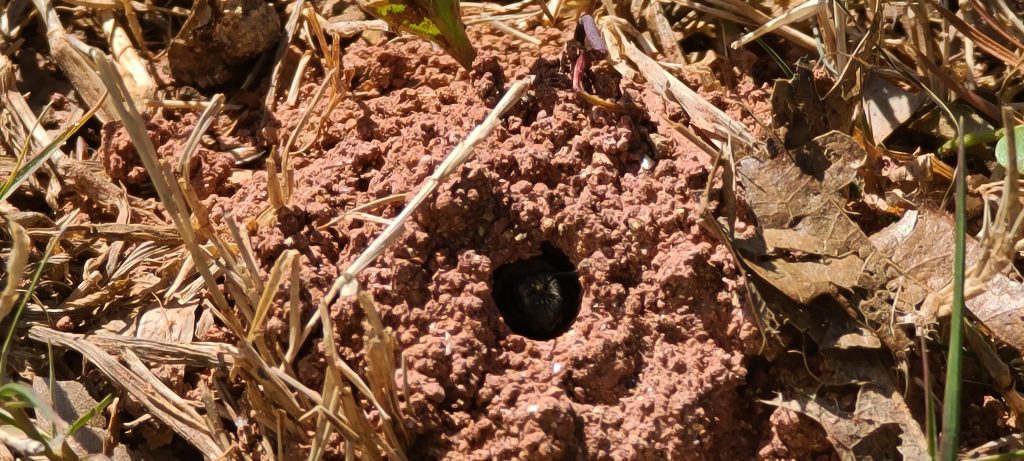

What can I do?
Installing new sod with thick grass is an expensive option but will deter ground bees. Planting new grass will take some time but once it grows in it will also deter ground bees. Watering the lawn on a regular basis is another good deterrent.
We can help!
At Invicta Environmental Pest Defense, we realize that everyone has different circumstances. We want to protect people that have allergic reactions or fears of getting stung. Homeowners want to protect their structures and lawns from pests. We would love to help you in anyway that we can at 984-300-0117 or invictapest.com.


